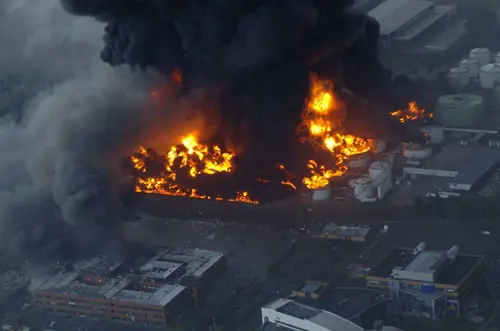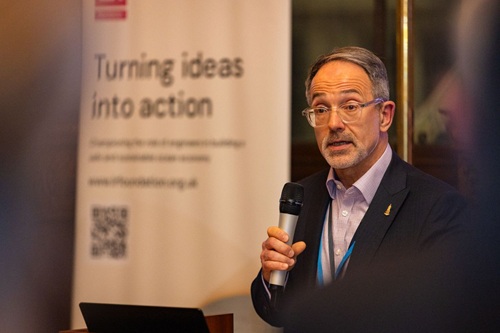Artificial intelligence (AI) and its impact on work practices was a significant feature of HSE’s AGM in which the regulator presented on its work and priorities.
News
HSE defends use of AI for protecting workers at AGM
Questions were taken from the floor at the live streamed event on 29 July, including from Rob McGill, national health and safety officer at Unite. He said there was excessive use of AI to monitor workers in workplaces he had visited and asked HSE what they were doing about the problem.
HSE chief executive Sarah Albon said monitoring workers was not ‘Big Brother’ unless its use broadened out the purpose of safety. “Failing to wear PPE, stepping out of a safe area, AI can provide much more immediate, quicker surveillance which can protect that worker,” she said.
But she added: “It’s important that the communication and consultation takes place with unions in advance.”
 HSE chief executive Sarah Albon said monitoring workers was not ‘Big Brother’ providing it was used for purposes of safety and that consultation before use had taken place. Photograph: iStock
HSE chief executive Sarah Albon said monitoring workers was not ‘Big Brother’ providing it was used for purposes of safety and that consultation before use had taken place. Photograph: iStock
Albon said the regulator was in the process of compiling a database of real-world examples of AI across the industry sectors it regulates, which would be used as a ‘repository to aid the development of insights pertinent to the risk assessment of AI applications in industrial settings’.
Earlier, Chair of the HSE Board Sarah Newton told attendees that the regulator was also using different AI language models to understand risk profiles across the construction sector.
"This helps us to identify mismatches between the actual hazards causing workplace incidents and the risks our inspectors commonly focus on during site visits," she said.
"We have now expanded this beyond the construction sector and are using it to analyse risks within the major hazards sector."
HSE updated that it is adopting new technologies and data analytics to target inspections, assess risks, and modernise systems.
Its focus areas continue to be asbestos, noise, musculoskeletal issues and stress, with some new work on the impact of forever chemicals, including Per- and Polyfluoroalkyl Substances (PFAS) in fire-fighting foams.
Watch HSE's AGM on YouTube here
NEWS

Buncefield explosion 20 years on: legacy continues to protect people and places, says HSE
By Belinda Liversedge on 11 December 2025
On the day of the Buncefield fire’s 20th anniversary, 11 December 2025, HSE has reflected on the ‘profound changes’ the catastrophic fire has had on the major hazards sector’s management of risk.

Lloyd’s Register Foundation’s Global Safety Evidence Centre celebrates with official launch
By Belinda Liversedge on 09 December 2025
We need to fill evidence gaps in key and emerging areas of safety, a leading voice in engineering risk management and major hazard industries has said.

Work more likely to impact on mental health for female workers, HSE stats suggest
By Belinda Liversedge on 03 December 2025
Female workers report significantly higher rates of stress compared to their male colleagues, HSE statistics show.



